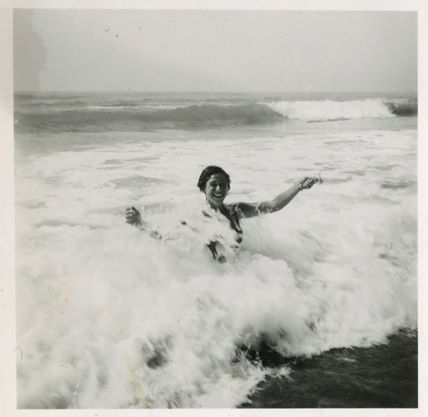Sophie Calle. MAdRE
curated by Beatrice Merz
11 October 2014 – 15 March 2015
A new important exhibition project marks the Castello di Rivoli’s march towards its thirtieth anniversary. Once again it proposes an international event that includes – as is the Museum’s tradition – something that goes beyond a mere collaboration with a prestigious artist to become a veritable challenge, a confrontation on the artist’s part with a venue full of history, to be related with his/her own past and stories, with personal experiences that are themes in works and research. This is the case for the important exhibition the Castello dedicates to the famous French artist Sophie Calle, an unchallenged protagonist on the world art scene, who will present a totally site-specific project for the monumental halls on the second floor of the Sabauda Residence. The exhibition concept focuses on two important projects the artist has carried forth for some years now:Rachel, Monique and Voir la mer. The comparison of these significant projects proposes two itineraries that are both distinct and united, including works that revolve around themes of affection and emotion, of death, of the analogy mother|sea (madre|mare) at the root of this exhibition’s title: a sea that welcomes and gathers, covers and invests an immensity of contrasting feelings and emotions.
This artist has always worked with topics such as detaching from a loved one, relationship break-ups, intimate life in general, and is able to effectively render not only the emotions but also the philosophical side, the reflection these arouse, accompanying the cultural elaboration of personal experience through such precise organization that may even seem obsessive, made of objects, videos, and texts: a sort of mise en place and theatre arrangement without scene performance. A process of appropriation through images where visitors, if they feel lost, may rediscover a course and in the end make it their own, like in a role-play novel.
Since the late 1970s, Calle has used provocative and quite controversial methods, closely relating her own emotions with the phases and events in her own personal life. The Castello di Rivoli exhibition reveals the artist’s “image accumulator” side together with her ability to make these totally essential, verging on minimal. Pure emotions, we could say.
The emotional aspect of the artist’s oeuvre does not shadow the analytical one; the questions on what it means to not see, what not seeing is. In other terms, a philosophical reflection on what it is we don’t see, on the role of relations and memories, on the paradox of the nature that embraces, that creates and destroys, on the blindness that spawns unawareness, on the absence of sight determined by the definitive aspects of detachment. There is an epic quality to the work of Sophie Calle that is evident in facing the theme of everyday tragedy, making us share personal pain, with a freeing and mnemonic effect.
Rachel, Monique
This is a group of works that began with the first video on the death of the artist’s mother.
Since the 2007 Venice Biennale, where only this video was shown, the work has constantly evolved over time, accumulating elements and memories almost in the form of a diary in reverse, increasing the artist’s body of work that will be displayed in the historic and lavishly decorated rooms of the Castello, thus embroidering a kind of new dialogue between the past of a centuries-old venue and the objects dear to her mother, or rather, objects and words that draw lymph from memories to become works of art. Calle herself specifies the object of her analysis, stating: “My mother loved being the subject of any discussion. Her life didn’t appear in my work and this annoyed her. When I put my camera at the foot of her death bed – I wanted to be present to hear her final words and I was frightened she would die without me there – she exclaimed: ‘Finally.’”
Voir la mer
A video installation conceived for Room 18, which over the years has hosted some of the Castello di Rivoli’s most important site-specific projects. Once again the artist presents the work well: “In Istanbul, a city surrounded by the sea, I met people who’ve never seen it before. I brought them to the shores of the Black Sea. They approached the water, separately, with their eyes lowered, closed, or with a blindfold. I stayed behind them. I asked them to look towards the sea and then turn back to me and show me their eyes which had just seen the sea for the first time.” Calle captures the feelings, happiness, and bewilderment through the moment when the protagonists turn to her after “contemplating” for a few minutes something they had never seen before. Never seen for the two-fold obstacle of their disability which does not allow them to see and their social status which has denied up to then the chance to immerse themselves – these people born and raised in a seaside city – in perceiving the sea, in a different way of seeing. In a city embraced by the sea in the twenty-first century, the artist finds and invites these people, who have never gone beyond the physical borders of Istanbul, and gives back to them the wonder of the non-visible. An elderly man, a girl, and a woman with a newborn child welcome guests in Room 18, with amazed faces they do not see but speak in a direct, head-on way.
http://castellodirivoli.org/en/mostra/sophie-calle-madre/

